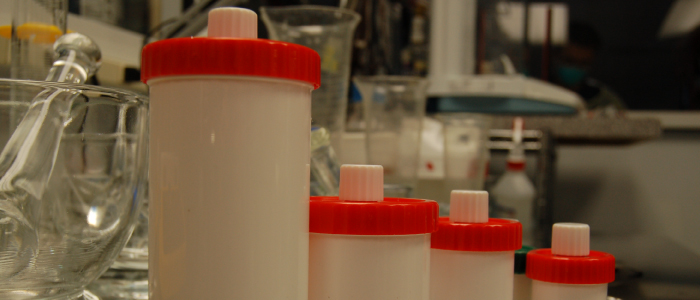 Over the past few years, compounding pharmacists have made great advances in their ability to formulate a wide variety of medications into cream and gel bases that actively transport the medication through the skin directly to the site of action. Instead of dealing with oral absorption complexities, transdermals offer almost complete delivery without many of the side effects associated with the medication when it is taken by mouth. Of course, gastric disturbances are eliminated when the medicine is applied to the skin. In addition, smaller amounts of active ingredient are used, which results in a much lower potential for systemic side effects.
Over the past few years, compounding pharmacists have made great advances in their ability to formulate a wide variety of medications into cream and gel bases that actively transport the medication through the skin directly to the site of action. Instead of dealing with oral absorption complexities, transdermals offer almost complete delivery without many of the side effects associated with the medication when it is taken by mouth. Of course, gastric disturbances are eliminated when the medicine is applied to the skin. In addition, smaller amounts of active ingredient are used, which results in a much lower potential for systemic side effects.
Many types of products can be formulated into transdermal bases. Most common are the NSAIDs, steroids, natural hormones (estrogens, progesterone, testosterone, DHEA, pregnenolone), muscle relaxants, antidepressants (such as amitriptyline for pain), and more. We have only begun to scratch the surface of the potential for transdermals.
Of particular note is the use of transdermal compounds for the treatment of a wide variety of pain. NSAID’s are used alone and in combination to ease pain associated with trauma and inflammatory conditions. Amitriptyline can be included to handle some of the neurogenic components. One popular transdermal contains gabapentin (trade name Neurontin). This product is often highly successful in treating pain that seems to be initiated in the nerves. Neurontin is used orally to treat a wide range of neurogenic pain. The primary difficulty with this route lies in the need to often use very high doses to effectively ease the pain. Accompanying the high oral dose are the many CNS side effects.
When the pain is localized, a gabapentin transdermal can be used with success but without the side effects. While it is impossible to claim that gabapentin transdermal is completely free of side effects, we can state the incidences are very low and usually related to topical irritation. It is best to always advise a patient to wash their hands after applying the product to avoid the possibility of getting the cream in their eyes (this is impractical if the treatment site is on the hands – in which case there is a warning to avoid contact with the eyes).
Another major advantage of transdermal delivery is the ability to exactly meet a patient’s needs by customizing a formula just for the patient. Because so many medications can be used to treat pain of mixed origin, the compounding pharmacist can work with the doctor and the patient to include those ingredients that are necessary to relieve the patient’s pain or discomfort.
